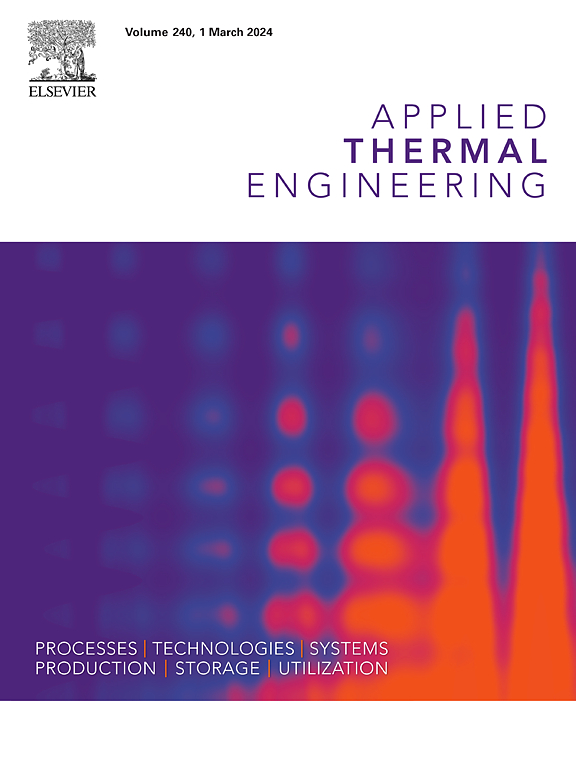Experimental investigation of lithium-ion battery thermal management for electric vehicles using mini channels cold plate and phase change material
IF 6.1
2区 工程技术
Q2 ENERGY & FUELS
引用次数: 0
Abstract
Effective thermal management of lithium-ion batteries is essential for ensuring safety in electric vehicles. Although these batteries offer a long lifespan and high energy density, they can also pose risks, such as increased temperature, that can lead to thermal runaway, battery damage, or even explosions. This study presents an innovative hybrid cooling model that integrates a water cooling system with mini-channel cold plates and an air cooling system with extended fins, both of which incorporate a phase change material. The aim is to experimentally investigate the thermal management system (BTMS) for lithium-ion battery packs in electric vehicles operating under high ambient temperature. The performance of the BTMS was evaluated at battery discharge rates of 1C, 2C, and 3C, with varying cooling water flow rates, at inlet water and ambient temperatures of 25 °C and 35 °C, respectively. The results showed that the hybrid cooling system, operating at a lower water flow rate of 0.0033 kg/s, successfully reduced the maximum battery temperature () to 34 °C, 43.5 °C, and 51.6 °C for discharge rates of 1C, 2C, and 3C, respectively. Additionally, the maximum difference between the battery pack cell’s temperatures () were 0.7 °C, 2.2 °C, and 4.3 °C, respectively. Furthermore, a higher flow rate of 0.05 kg/s resulted in of 30.5 °C, 40 °C, and 47.3 °C, with corresponding of 0.5 °C, 1.5 °C, and 2.5 °C respectively. The proposed hybrid model successfully maintained a of less than 5 °C, highlighting the effectiveness of this cooling system for ensuring battery safety.
求助全文
约1分钟内获得全文
求助全文
来源期刊

Applied Thermal Engineering
工程技术-工程:机械
CiteScore
11.30
自引率
15.60%
发文量
1474
审稿时长
57 days
期刊介绍:
Applied Thermal Engineering disseminates novel research related to the design, development and demonstration of components, devices, equipment, technologies and systems involving thermal processes for the production, storage, utilization and conservation of energy, with a focus on engineering application.
The journal publishes high-quality and high-impact Original Research Articles, Review Articles, Short Communications and Letters to the Editor on cutting-edge innovations in research, and recent advances or issues of interest to the thermal engineering community.
 求助内容:
求助内容: 应助结果提醒方式:
应助结果提醒方式:


